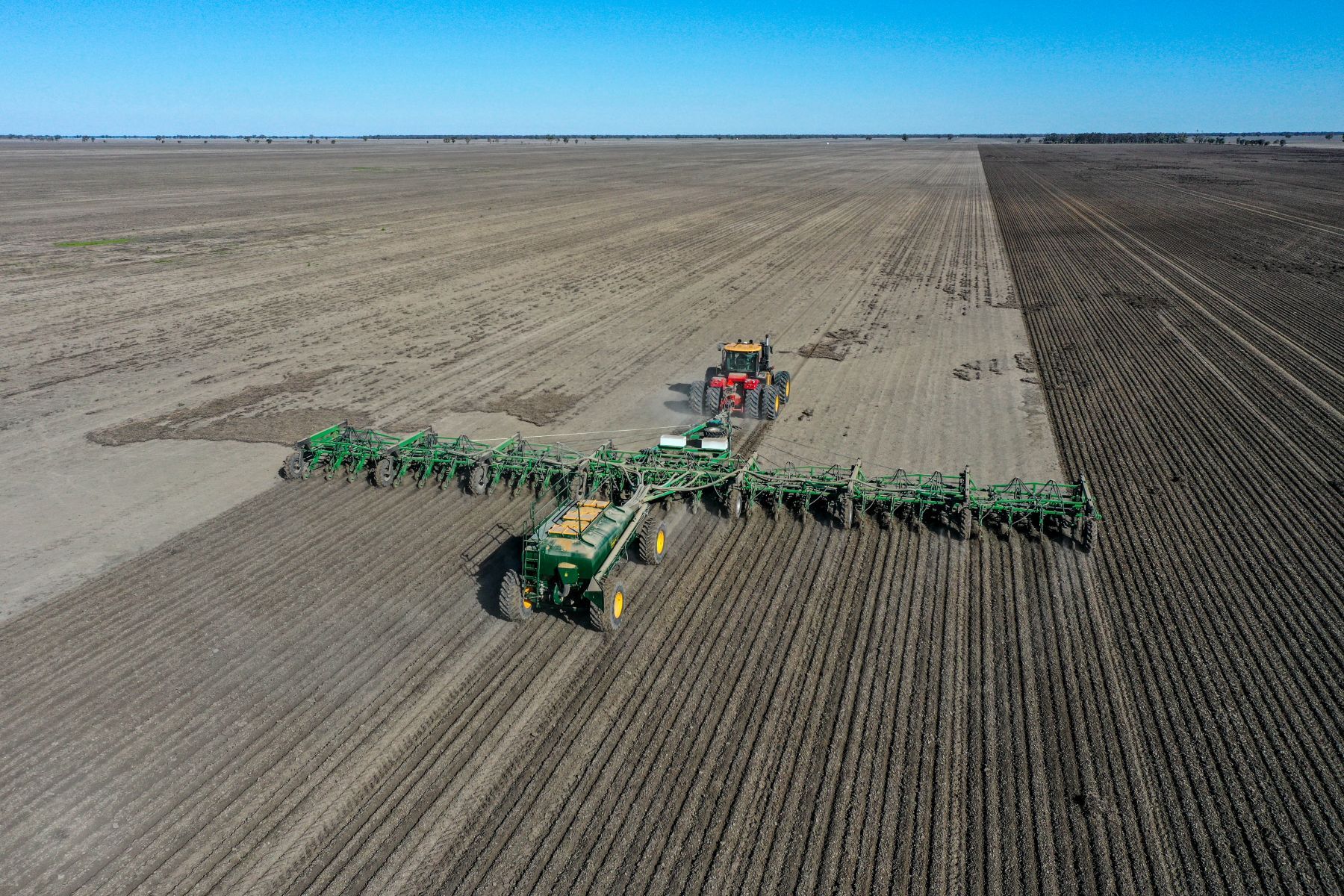The Australian Beef Market in 2025: An Absolute Cracker
In this column in July, the StoneX H2 2025 Australian Cattle & Beef Market Outlook’s bold calls were analysed and assessed for what the final 6...
3 min read
Richard Koch : Apr 30, 2025

By my estimation about 60% of the Australian winter crop area is being planted into good to excellent conditions with the remainder less so, with decisions being made around when and what to sow.
Queensland has started planting from Roma South down to Mungindi with dual purpose and forage oats, canola, faba beans and barley done and growers now moving onto wheat. At a rough estimate, planting may be around 30-40% complete into good to excellent moisture and ideal planting conditions.
North of Parkes/Molong is excellent. South of Parkes/Molong is patchy, although rain over the ANZAC weekend helped south-west NSW and the western Riverina.
Growers across the central and north-west NSW are on a similar path to Queensland north of a line from Parkes to Molong sowing dual purpose and forage oats, faba beans, canola and barley into good moisture and moving into wheat with planting about 40-50% done. With another 20-40mm being received over the weekend, conditions are ideal. Planting is about 60% done in the central west and 75% done across the northern and central tablelands, with forage crops and pastures such as Brassica being sown.
Growers are hoping that it remains mild through late autumn so some pasture and crop growth can be achieved before it gets too cold.
READ JANE BUNN'S LATEST FORECAST: May highly likely to be drier than average for much of the country
South of the line from Parkes to Molong through to the Riverina growers are planting into less-than-ideal conditions having missed out on that system which has got growers off to a good start north of this line. Rain of 10-50mm over the weekend across much of NSW except for the central and eastern Riverina will have growers in most areas on planters and planting into improved conditions for lower western and south-west slopes and planes and the western Riverina.
Elders’ agents report that the Monaro (south-east of Canberra ACT to Vic border) has received rainfall of 20-50mm early this week from mountains to coast. Plenty of healthy grazing crops and soon to be perennial pasture. Set up for an above average winter.
Planting is underway across Victoria except for the south-west. Timely rain across most of the Mallee over the ANZAC weekend has put a spring in the step of grain growers there and they will be planting flat-out but hoping for some follow-up rain to consolidate crops in coming weeks. Outside of the Mallee, Wimmera and Central Victorian and North East Victoria growers are taking a steady approach to sowing crops into limited topsoil moisture levels and subsoil moisture levels, which are at a big deficit to normal. Planting is one to two weeks behind normal but it has been a mild autumn, although nights are just starting to get cold.
Likewise, South Australian growers are taking a very cautious approach to planting given current seasonal conditions with a 25-40mm deficit in subsoil moisture and virtually no topsoil moisture. About 50% of South Australian grain growers sow by the calendar and have made a start planting pulses and dual-purpose forage crops such as vetch and grazing barley with programs about 15-20% complete. Growers that have started up the planter are working gentlemen’s hours and taking their time allowing several decision points along the way. These growers would now be considering whether to plant canola and how much risk they are willing to take on. With the days getting shorter and nights turning cooler, every week that goes without a decent autumn break heightens concerns.
Most of South Australia is in the same position with rainfall totals of less than 10mm in the current growing season, with those lucky enough to get under thunderstorms planting in 15-25mm, but after a long, dry summer subsoil moisture is a fair way down.
The main exception is growers in the Murray-Mallee that mostly missed out last year. This year, recent rain over the ANZAC weekend will allow them to plant into good topsoil with subsoil moisture having been boosted by some summer storms. These growers will be on a similar trajectory to growers in south-west NSW.
In WA, with widespread rain in the week leading into Easter, planting is now underway across all cropping zones bar Geraldton (except in the far east). Last week most of the WA wheatbelt received another 20mm bringing totals for the state to 20-50mm since the start of the month. Anywhere south of Wongan Hills conditions are near ideal and they get better as you head south and east. The Lakes area in south-east WA is off to its best start in living memory. Most of the Geraldton zone is too dry to plant (except far east) and the northern part of Kwinana north zone (north of Wongan Hills) is touch and go sowing into about 20mm without much subsoil.
Elders Business Intelligence Analyst Richard Koch combines a deep understanding of global market dynamics with regular insights from Elders staff on the ground, providing informed analysis shaped by both data and real-world observations.
.jpg)
In this column in July, the StoneX H2 2025 Australian Cattle & Beef Market Outlook’s bold calls were analysed and assessed for what the final 6...
.png)
Each December we save the last article of the year for a bit of a crystal ball gaze, as we try to bring together market fundamentals and work out...
.png)
Australia’s wool market posted another strong performance this week, with all micron categories attracting solid support across the three selling...